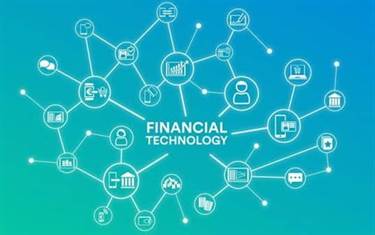Effective governance depends on a clear and efficient structure for decision-making, and on placing the right people in the right roles to make the best decisions about the application and its development and operation. Organizations must also ensure adequate transparency and flow of information such that project managers can make the most informed decisions to direct the lifecycle of the application. Consequently, application lifecycle management includes software development lifecycle, but SDLC only focuses on a fraction of ALM. These tools are a type of software that helps you track and plan all the activities around the application lifecycle.
- Consequently, application lifecycle management includes software development lifecycle, but SDLC only focuses on a fraction of ALM.
- Because ALM involves such a wide range of variables, processes, people, purposes, and more, dedicated tools are typically used to ensure that everything maintains organization, compliance, and communication between teams.
- ALM supports a DevOps approach, which goes hand-in-hand with Linux® containers.
- Rocket DevOps ALM provides workflow automation that is designed to make the often almost overwhelmingly complex change management process manageable and repeatable.
- ALM is a process of specification, design, development, and testing of a software application.
Because ALM offers a set of clear steps, the development process is more streamlined. Failure to follow the ALM process (e.g., not settling on requirements at the beginning or inconsistent testing practices) will lead to a low-quality product and a bad user experience. ALM can sometimes be confused with SDLC, or software development what is alm lifecycle. While they’re similar, Application Lifecycle Management refers to the entire lifecycle of an application, while SDLC focuses only on the development stage that we discussed above. In essence, SDLC can be considered a section of the ALM process, but doesn’t include requirements gathering, planning, maintenance, etc.
Our customers do more.
It provides a roadmap for your project and makes it easier to manage the timeline, budget, and resources. There are a number of ways this might be done, depending on customers’ needs. Check out the free Business-Software Top 10 Application Lifecycle Management Software report to compare leading products and discover an ALM software solution that meets your company’s unique needs. ALM tools stand out because they provide complete requirements’ traceability and timely validation.
In an era where software development plays a pivotal role in driving innovation and growth, adopting an ALM approach is no longer a luxury, but a necessity. Businesses can greatly benefit from adopting ALM practices by empowering development teams to transform chaotic processes into well-orchestrated ones. ALM tools must provide required functionality and adjust to the team’s processes simultaneously, especially as it concerns software development in strictly governed environments or process-oriented spheres.
ApplicationLifecycleManagement
Other features that are critical to a company’s success may be included or available via API connections or direct integrations. It focuses on the automation of processes and the integration of teams across the entire application lifecycle. One of the primary advantages of ALM is its ability to foster seamless collaboration and communication among cross-functional teams. ALM tools provide a centralized platform where developers, testers, project managers, and stakeholders can collaborate in real time. This reduces communication gaps, minimizes misunderstandings, and ensures that all team members are on the same page throughout the development lifecycle. Whether it’s sharing requirements, tracking progress, or discussing issues, ALM encourages transparency and teamwork, leading to higher-quality outcomes.

Basically, ALM tools create a well-structured and flexible setting for cooperation between departments to accelerate and increase the effectiveness of the product development cycle and its particular phases. Spatial is available to help you make the journey to an ALM model of application development. The experts at Spatial can provide application lifecycle services that are right for your business. Whether the company uses Git, Subversion, Mercurial, or another version control tool, you’ll want a version control tool that catalogs the differing versions of the code as you build and maintain the app. These tools ensure more up-time for your application as code can be tested safely and shipped code can be rolled back to previous versions if it should break.
For organizations that host applications in the cloud, Sumo Logic’s cloud-native platform is the ideal solution for monitoring cloud applications. Sumo Logic provides security, operational and business analytics that helps secure your public cloud data assets while driving performance excellence and business success. As soon as teams build a full version of the application, it must undergo a series of tests to ensure it behaves as planned. This is a crucial step to uncover any bugs that will cause the application to break. We usually test by imitating all possible user interactions within the application and observing the application’s behavior. Testing the application is a common effort between the software development and DevOps teams.
You’ll know how far along your product development (or sprint) is and what has been tested. There are processes that the idea needs to go through before it can become a product. Design management is a process that helps to enhance customer satisfaction and loyalty by improving usability. An important element of the maintenance stage is defining the system’s retirement. In other words, teams must decide on the point at which work should be stopped and moved to a newer version of the product or migrated to a different product entirely. Understanding and utilizing the SDLC ensures that each phase receives the attention it deserves while allowing your team to make quick changes when necessary.

The various ALM stages offer clear steps for application development, thereby making the entire planning process faster and more efficient. In addition, having a clear plan for the application makes it easier to estimate the time and resources required to develop an effective product. SpiraTeam is the premier ALM system that manages your requirements, releases, tests, issues, and tasks in one integrated environment. SpiraTeam also provides integrated dashboards of project health and status information, as well as key project quality and progress indicators. Software development lifecycle (SDLC) refers to the processes or procedures involved in creating a high-quality software product. Application lifecycle management is similar to SDLC, but it incorporates a larger range of processes.

Generate a Risk Management file that is fully compliant with ISO standards with one click. Improve your delivery time by utilizing software that integrates Application Lifecycle Management (ALM) and regulated Design Control. Align teams with a common release cadence, advanced dependency mapping, and more. Still, some development approaches, mainly the iterative ones, prefer to see requirements as “flatter structures” where the requirements are structured as Use Cases, and if necessary aggregated as Epics. Requirements will include everything from business requirements from your stakeholders to compliance requirements from regulatory bodies. After the application is developed, the role of the users comes to play.
